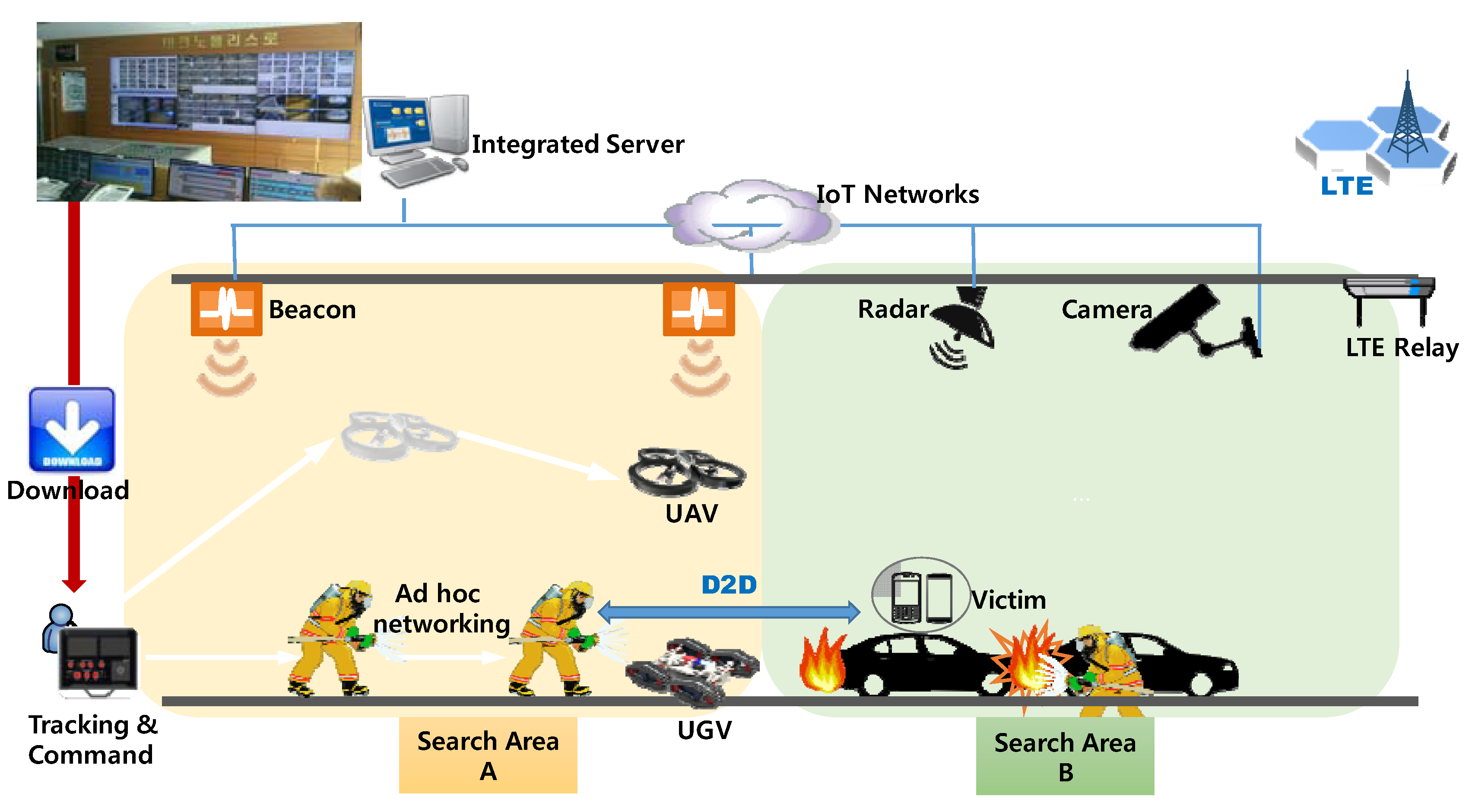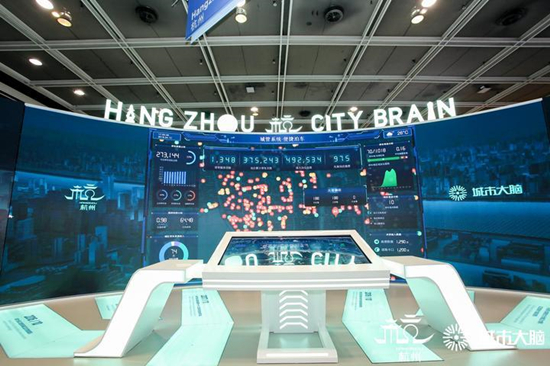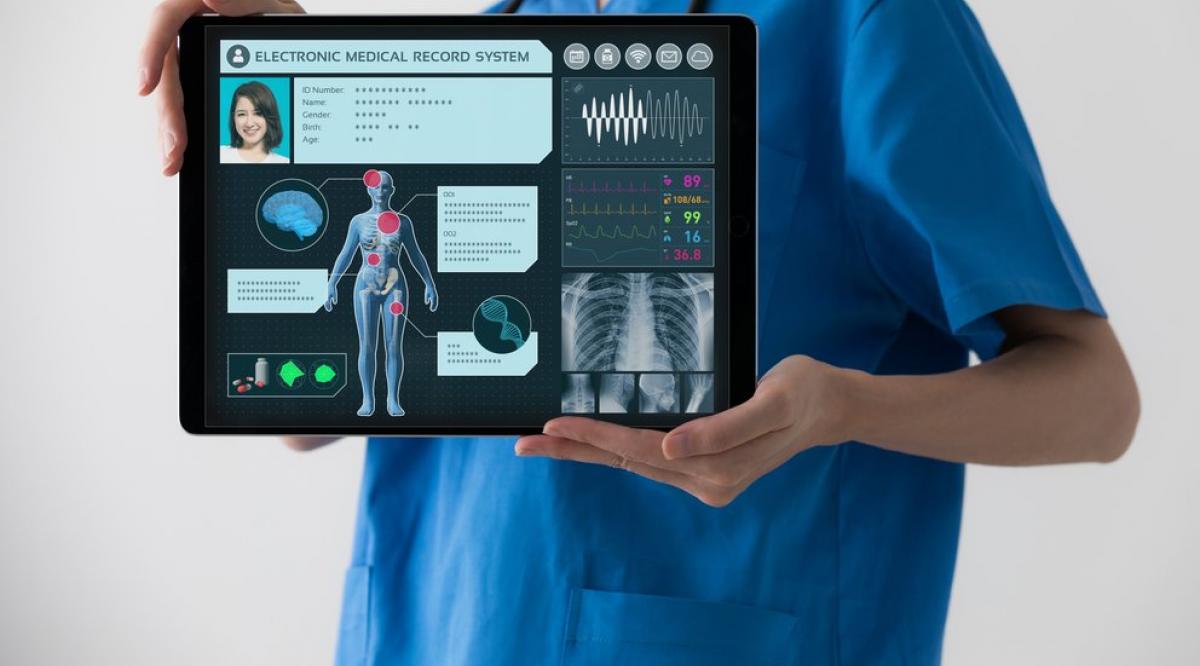My Definition of a Smart City

A smart city is a city that uses technology and data to improve the quality of life for its residents and make the city more efficient, sustainable, and responsive to their needs. This involves the integration of various systems and services, such as transportation, energy, healthcare, and public safety, using information and communication technologies. Smart cities use sensors, cameras, and other IoT devices to gather data and analyze it in real-time, making informed decisions to improve city services, reduce energy consumption, and improve traffic flow. Staying true to this definition will create a more livable, sustainable, and connected urban environment that benefits all its residents. To me, this is the ultimate goal of a smart city and what makes it a good definition.
Smart Public Health and Safety In Smart Cities
Smart public health and safety in smart cities focuses specifically on using technologies and data analysis in order to improve the well-being and safety of residents. Factors analyzed may include air quality, water quality, noise levels, and temperature. This data is then used to identify areas of concern and take proactive measures to address public health and safety issues.
For example, air quality sensors can detect high levels of pollutants in the air, which can trigger automatic alerts to city officials and allow them to take action to improve air quality, such as reducing traffic congestion or adjusting industrial emissions.
 Smart cities can also use data analytics to enhance public safety. For instance, video surveillance cameras equipped with facial recognition technology can help law enforcement officials identify potential criminal suspects and monitor areas where criminal activity is more likely to occur. Additionally, IoT sensors can detect unusual activity or sounds in public spaces, such as gunshots or screams, which can trigger automatic alerts to emergency responders and help them respond more quickly.
Smart cities can also use data analytics to enhance public safety. For instance, video surveillance cameras equipped with facial recognition technology can help law enforcement officials identify potential criminal suspects and monitor areas where criminal activity is more likely to occur. Additionally, IoT sensors can detect unusual activity or sounds in public spaces, such as gunshots or screams, which can trigger automatic alerts to emergency responders and help them respond more quickly.
Smart cities can also use technology to improve emergency response times. For example, in the event of a natural disaster, sensors and cameras can help emergency responders assess the extent of the damage and prioritize rescue efforts. Additionally, real-time traffic data can be used to optimize emergency response routes and reduce response times.
Overall, smart public health and safety in smart cities can enhance the quality of life for residents by proactively addressing public health concerns, enhancing public safety, and improving emergency response times.
City Brain Project – Hangzhou, China
One smart city project that aligns with smart public health and safety is the City Brain project in Hangzhou, China. The project is a collaboration between the Hangzhou government and the technology giant Alibaba Group. The main objective of the project is to use artificial intelligence (AI) to manage traffic and improve public safety, among other goals.
The City Brain project uses a network of cameras, sensors, and data analysis tools to monitor traffic and improve urban planning. The system uses real-time data to optimize traffic flow, reduce congestion, and improve response times for emergency services. The system is also used to monitor and respond to incidents, such as accidents or traffic violations, in real-time.

One of the most impressive aspects of the City Brain project is its ability to integrate data from multiple sources to provide a comprehensive view of traffic and public safety. The system can analyze data from traffic cameras, social media, weather reports, and other sources to identify potential issues and take action. For example, the system can use data from traffic cameras to detect accidents and notify emergency services, or it can use weather reports to predict traffic congestion and recommend alternate routes.
The City Brain project has been successful in reducing traffic congestion and improving public safety in Hangzhou. The project has reduced traffic congestion by 15%, and has improved emergency response times by up to 50%. The system has also been used to detect and respond to incidents, such as illegal parking or traffic violations, which has helped to improve public safety and reduce crime.
My personal thoughts on the City Brain project are mixed. On the one hand, the project is an impressive example of the potential of smart technology to improve public health and safety. The use of AI and real-time data analysis is a powerful tool for managing traffic and responding to incidents. The project has been successful in reducing congestion and improving emergency response times, which are both critical for public safety.
However, there are also concerns about privacy and the potential misuse of data. The system collects vast amounts of data on residents, including their movements, social media activity, and other personal information. There are concerns that this data could be used f

or surveillance or other purposes that violate privacy rights. There are also concerns about the accuracy and reliability of the AI algorithms used by the system, as errors could result in false alerts or other issues.
Overall, the City Brain project is an impressive example of the potential of smart technology to improve public health and safety. However, it is important to ensure that the project is implemented in a way that protects privacy and civil liberties, and that the AI algorithms used by the system are accurate and reliable. With the right safeguards in place, the City Brain project has the potential to revolutionize urban planning and public safety in cities around the world.
In terms of improvements, one area where the City Brain project could be enhanced is in its integration with public health data. While the system is currently focused on traffic and emergency response, it could also be used to monitor and respond to public health emergencies, such as disease outbreaks or pollution incidents. By integrating public health data into the system, the City Brain project could provide a more comprehensive view of public health and safety in Hangzhou, and could help to improve response times for public health emergencies. Additionally, transparency and public involvement in the development and implementation of the project should be emphasized to build public trust and to ensure that the project serves the best interest of the public.
Smart Hospital Project – Houston, Texas
Another smart city project that aligns with smart public health and safety is the “Smart Hospital” project in the city of Houston, Texas. The project was initiated in 2017 with the aim of creating a smarter, more efficient, and more secure healthcare system in the city, with the use of advanced technologies.
The general objective of the project is to leverage technology to improve the healthcare delivery system in the city, reduce healthcare costs, and enhance patient outcomes. The project is focused on creating a digital ecosystem that connects hospitals, doctors, and patients, to enhance the quality of care, increase accessibility to healthcare, and make the healthcare system more efficient.
One key aspect of the Smart Hospital project is the use of electronic health records (EHRs). The EHR system enables doctors and other healthcare professionals to access patient records, test results, and other medical data in real-time, from anywhere in the hospital, or even remotely. This allows for faster diagnosis, more accurate treatment plans, and better outcomes for patients.
doctors and other healthcare professionals to access patient records, test results, and other medical data in real-time, from anywhere in the hospital, or even remotely. This allows for faster diagnosis, more accurate treatment plans, and better outcomes for patients.
Another aspect of the project is the use of telemedicine. The Smart Hospital project has created a telemedicine platform that enables doctors to consult with patients remotely, using video conferencing technology. This makes it easier for patients in remote or underserved areas to access healthcare, and also reduces the need for patients to travel long distances for consultations.
The Smart Hospital project also includes the use of sensors and IoT devices to monitor patients’ health and vital signs. These devices can collect data on a patient’s heart rate, blood pressure, and other vital signs, and transmit this data to healthcare professionals in real-time. This allows for earlier detection of health issues, faster responses to emergencies, and more personalized care for each patient.
In addition to the use of advanced technology, the Smart Hospital project also aims to improve the physical environment of hospitals, to enhance patient comfort and safety. For example, the project includes the installation of smart lighting and air conditioning systems that can automatically adjust based on the number of people in a room or the time of day, to ensure that patients are always comfortable and safe.
Overall, the Smart Hospital project is an innovative and ambitious initiative that seeks to leverage technology to enhance the quality of healthcare in Houston. By creating a digital ecosystem that connects hospitals, doctors, and patients, and by using advanced technologies like EHRs, telemedicine, and IoT devices, the project aims to make healthcare more accessible, more efficient, and more effective. While the project is still in its early stages, it has the potential to revolutionize the healthcare system in Houston, and could serve as a model for other cities around the world.

However, there are also potential concerns with the Smart Hospital project. One issue is the potential for data breaches or other cybersecurity threats, as the use of EHRs and other digital technologies increases the amount of sensitive medical data that is stored and transmitted electronically. The project will need to ensure that adequate security measures are in place to protect patient privacy and prevent data breaches.
Another concern is the potential for the Smart Hospital project to exacerbate existing health inequalities. While the project aims to increase accessibility to healthcare through telemedicine and other digital platforms, it could also exacerbate existing disparities in access to technology, especially for low-income or underserved populations. The project will need to ensure that all patients, regardless of their income or background, have access to the same level of healthcare and technology.
In conclusion, the Smart Hospital project in Houston is an exciting and innovative initiative that has the potential to revolutionize healthcare in the city. By leveraging technology to enhance patient outcomes, improve accessibility, and reduce costs, the project could have a significant impact on the healthcare system in Houston and beyond. However, the project will need to address potential concerns around data security and health inequalities, to ensure that all patients can benefit.
Smart Healthy City Project – Ningbo, China
The final smart city project I researched that aligns with smart public health and safety is the “Smart Healthy City” project in Ningbo, China.
The general objective of the Smart Healthy City project is to use technology to create a healthier and safer living environment for residents. The overall goal is to improve the quality of life for citizens by integrating technology into city services, infrastructure, and transportation to promote public health and safety.
This project aims to improve public health and safety by integrating various technologies into the city’s infrastructure, transportation, and services. The project uses a smart city operating system (SCOS) that gathers data from sensors and other devices placed throughout the city. The data is analyzed to provide insights into the environment, transportation, and health indicators, which can be used to make decisions that impact public health and safety.
One of the main components of the Smart Healthy City project is the health information platform. The platform integrates information from different sources to provide personalized health information and services to residents. It provides access to information on health conditions, medications, and emergency services. The platform also includes a health assessment system that uses big data and artificial intelligence to evaluate a person’s health status and risk of illness. Based on this evaluation, personalized health management plans are created to prevent and manage illnesses.
The project also focuses on improving air quality by using sensors to monitor air quality in different parts of the city. The data is then used to create an air pollution map that can be accessed by citizens. In addition, the city has installed air purification towers in high-traffic areas to improve air quality.

Another aspect of the project is the implementation of smart transportation systems. The system uses data from traffic sensors and cameras to optimize traffic flow and reduce congestion. This not only helps to improve transportation efficiency, but also reduces air pollution and improves public safety.
The Smart Healthy City project in Ningbo is an impressive initiative that addresses the health and safety concerns of citizens by using technology to improve the city’s infrastructure and services. By providing citizens with personalized health information and services, the project empowers citizens to take charge of their health and well-being. The project’s focus on air quality and traffic management are also commendable as they address two major issues that impact public health and safety.
However, there are also some criticisms of the project. One concern is the potential for data breaches, as the project collects large amounts of sensitive data on citizens. Another issue is the accessibility of the health information platform, which may not be accessible to everyone. There is also the question of cost, as implementing and maintaining the technology may be expensive.
To improve the project, more efforts could be made to address the concerns of data security and accessibility. For example, the government could work with community groups to increase awareness and provide training on how to access and use the health information platform. In addition, cost could be reduced by leveraging public-private partnerships to implement the project.
In conclusion, the Smart Healthy City project in Ningbo is an example of how technology can be leveraged to promote public health and safety. By using data and technology to improve city services, infrastructure, and transportation, the project creates a healthier and safer living environment for citizens. While there are some concerns and criticisms, the project represents an important step in improving the quality of life for citizens through the use of technology.
Citations of Articles and Photos
Air Quality Cities – air quality monitor systems – ambient, noise and air quality monitoring systems. Kunak. (2020, October 27). Retrieved February 17, 2023, from https://www.kunak.es/en/smart-environment/smart-cities/air-quality-cities/
Andrews, R. (2017, October 25). This ‘Smart city’ in China is controlled by an artificial intelligence. IFLScience. Retrieved February 17, 2023, from https://www.iflscience.com/smart-city-china-controlled-artificial-intelligence-44400
Antunes, M. E. (2022, June 20). Smart Cities, smarter public health. Deloitte Insights. Retrieved February 17, 2023, from https://www2.deloitte.com/xe/en/insights/focus/smart-city/building-a-smart-city-with-smart-digital-health.html
Chen, S. (2021, June 10). Across China, ai ‘city brains’ are changing how the Government runs. South China Morning Post. Retrieved February 17, 2023, from https://www.scmp.com/news/china/science/article/3136661/across-china-ai-city-brains-are-changing-how-government-runs
Gonzalez, G. (n.d.). Houston methodist to break ground this year on 400-bed smart hospital. Becker’s Hospital Review. Retrieved February 17, 2023, from https://www.beckershospitalreview.com/innovation/houston-methodist-to-break-ground-this-year-on-400-bed-smart-hospital.html
Jaret, P. (2018, August 21). Electronic health records: What will it take to make them work? AAMC. Retrieved February 17, 2023, from https://www.aamc.org/news-insights/electronic-health-records-what-will-it-take-make-them-work
Kim, Y.-D., Son, G.-J., Kim, H. K., Song, C., & Lee, J.-H. (2018, July 18). Smart disaster response in Vehicular Tunnels: Technologies for search and rescue applications. MDPI. Retrieved February 17, 2023, from https://www.mdpi.com/2071-1050/10/7/2509
Mozur, P. (2018, July 8). Inside China’s dystopian dreams: A.I., shame and lots of cameras. The New York Times. Retrieved February 17, 2023, from https://www.nytimes.com/2018/07/08/business/china-surveillance-technology.html
Phelan, H. (n.d.). Can China’s Smart Cities Improve Public Health? HealthXL. Retrieved February 17, 2023, from https://www.healthxl.com/blog/can-chinas-smart-cities-improve-public-health
Plans approved for Houston Methodist ‘Smart Hospital of the future’ in Cypress. Medical Construction and Design. (2022, February 15). Retrieved February 17, 2023, from https://mcdmag.com/2022/02/plans-approved-for-houston-methodist-smart-hospital-of-the-future-in-cypress/
Welch, A. (2021, July 23). Ningbo smart city in China masterplan – e-architect. e-architect. Retrieved February 17, 2023, from https://www.e-architect.com/china/ningbo-smart-city-in-china
What is a smart city? – definition and examples. TWI. (n.d.). Retrieved February 17, 2023, from https://www.twi-global.com/technical-knowledge/faqs/what-is-a-smart-city
Wu, J. (2020, August 18). Houston is using the pandemic as an opportunity to build a resilient Smart City. Forbes. Retrieved February 17, 2023, from https://www.forbes.com/sites/junwu1/2020/08/18/houston-is-using-the-pandemic-as-an-opportunity-to-build-a-resilient-smart-city/?sh=45e1d5496a5f
Leave a Reply